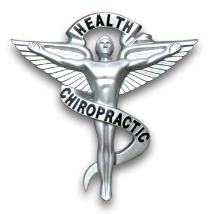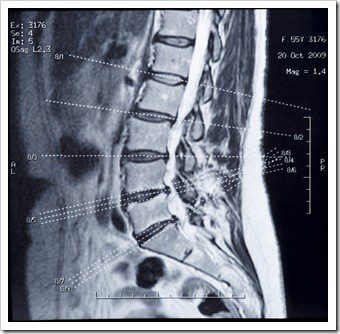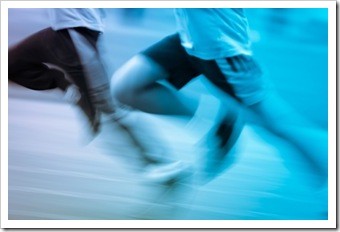Posts Tagged ‘Chiropractors in New Fairfield CT’
Welcome to Chiropractic Life and Wellness Center's Chiropractors in New Fairfield CT Archive. Here you can learn more about Chiropractic Life and Wellness Center, Chiropractic, and Dr. Brandon Chorney, today's choice for Chiropractors in New Fairfield, CT. Read Dr. Brandon Chorney's Chiropractic Chiropractors in New Fairfield CT for the health of it.
We look forward to serving you! Call - 203-746-6543.
by Dr. Brandon Chorney | Jul 2, 2019 | Health Articles

Summertime madness of activities about to begin! We had just about mastered the balance all of our daily activities. Now with the ring of the last school bell hit fast forward and add the bumper of kids games, practices, carpools and change of babysitters. As our activities become a series of the next, we sometimes...
Read More >>
by Dr. Brandon Chorney | Jun 18, 2019 | Health Articles

src="https://chirolifewellness.com/wp-content/article-images/travel-headaches-2016-b.jpg" width="320" border="0" />Buckle up! Our traveling season is upon us. Despite the saying "getting there is half the fun," planes, trains, and automobiles can put a real strain on our summer holiday fun. So let's start this season off right, and follow these tips to survive the physically demanding prospect of traveling to your...
Read More >>
by Dr. Brandon Chorney | May 7, 2019 | Health Articles

Are you suffering from leg pain that may burn, ache, and radiate to your knee or worse yet be felt down to your toes? The bad news is that it hurts tremendously and you have become tired with the pain of trying to "cure" the problem with your leg. The great news is that it...
Read More >>
by Dr. Brandon Chorney | Oct 23, 2018 | Health Articles

Almost everyone knows the symbolic goal of Mount Midoriyama. The pinnacle test which American Ninja warrior contestants will train year round to reach and push their bodies to the edge of better, stronger, and faster. Whether we are active participants or avid watchers, we witness the incredible strides in the performance that our bodies continue to make when the right elements, techniques, and training are applied.
The miraculous nature of our sports performance techniques is not only building strength to strength but maximizing the small or large repair cycle of the human frame to continue to create a top athlete.
Research on the Secrets of Sports Performance
We long to discover and duplicate the secret recipe of a top athlete. We avidly search to find a person or team who can help you build a better stronger body while increasing performance but know the secret to rehabilitate an injured area and rejuvenate the area to better and stronger than before.
A research project published in the September 2005 edition of The Journal of Manipulative and Physiological Therapeutics showed that spinal dysfunction affects reaction times and performance. It was merely able to prove that spinal dysfunction is related to slower and less accurate reaction times and cognitive function.
Another double-blind, randomized, study was also performed on thirty volunteers who had presented with what the researchers called “cervical spinal joint dysfunction.” This study consisted of a range of computer-based tasks performed by the volunteers to determine various reaction times. Researchers at the New Zealand Chiropractic College examined the volunteers to assess areas of spinal dysfunction. A baseline note was made on each subject indicating the number of regions of spinal dysfunctions they had. The reaction times of the volunteers were then compared to their number of areas of spinal dysfunctions to see if there was any relationship.
The results showed that there was a connection between the number of areas of spinal dysfunction and certain types of reaction times. Researchers also noted that the variety of reaction times affected by multiple areas of spinal dysfunction were therefore related to impaired cortical processing and significantly less accurate response selection. They found that the more areas of spinal dysfunction, the more it affected reaction times.
Finally, a follow-on study by the researchers concluded that certain types of reactions times improved with spinal adjustments in regions of spinal dysfunctions. The ramifications of this study not only supported the effects of chiropractic adjustments on general health but offer the basis of training and rehabilitation benefits to top athletes.
Top Notch Sports Medicine Top Team Tips:
In addition to adding chiropractic and spinal rehabilitative care, top healthcare experts recommend following the tips below to ensure you are well-prepared to play full-out in any sport:
Proper Nutrition
- Eat a well-balanced diet and avoid skipping meals.
- Follow dietary rules that are imposed on participants of certain sports, without which optimum performance is unlikely.
- Maintain a healthy weight while in training. Be aware of calorie intake to burn ratio.
Proper Hydration
- Hydration is vital to optimal fitness.
- Drink at least 8 eight-ounce glasses of water a day.
- Ask for advice when considering using a good quality sports drink for a source of replenishment.
Stretching and Warm ups
- Before every event – competition or practice – Warm Up!
- Jogging, jumping rope, lifting light weights are all good ways to avoid torn or ripped muscles.
Nutritional Boost
- Multi-vitamins may help avoid a deficiency.
- B-complex vitamins and amino acids can help reduce pain after contact sports.
- Thiamine helps promote healing.
- Vitamin A is good for scar tissue.
Proper Rest
- Get eight hours of sleep a night to avoid adversely affecting performance.
- Fatigue can appear as irritability and a loss of interest in the sport.
Join Our Team!
As many of the top athletes know, being in the top 1% includes having regular chiropractic care. Having their bodies in optimal health and alignment allows them to achieve optimal results.
Our expert team was designed with that premise in mind. To play like a pro, you must train, heal, and recover like a pro for maximized potential and ultimate success.
by Dr. Brandon Chorney | Mar 22, 2018 | Health Articles

Have you ever witnessed a professional or Olympic athlete that seems to be superhuman? Did you sit and watch mesmerized by their quick reflexes, amazing speed, and agility?
We all have. While many simply believe it’s “enhancement drugs” others, who are sports athletes, investigate further to find out what measures they are taking to become the 1% of athletes on the planet. We long to discover and duplicate the secret recipe of the top team behind them who can help rehabilitate an injured area and build a better stronger body while increasing performance naturally.
First the Research for Improving Performance
A research project published in the September 2005 edition of The Journal of Manipulative and Physiological Therapeutics showed that spinal dysfunction affects reaction times and performance. Simply it was able to prove that spinal dysfunction is related to slower and/or less accurate reaction times and cognitive function.
The double-blind, randomized, study was performed on thirty volunteers who had evidence of what the researchers called “cervical spinal joint dysfunction”. Researchers at the New Zealand Chiropractic College examined the volunteers to determine areas of spinal dysfunction. To begin with, it was noted in each subject how many areas of spinal dysfunctions were found. Later this information was compared to the results of the reaction times of the test results.
The study consisted of a range of computer-based tasks performed by the volunteers in order to determine various reaction times. The reaction times of the volunteers were then compared to their number of areas of spinal dysfunctions to see if there was any relationship.
The results showed that there was a connection between the number of areas of spinal dysfunction and certain types of reaction times. Researchers also noted that the types of reaction times affected by multiple areas of spinal dysfunction were therefore related to impaired cortical processing and significantly less accurate response selection. In fact, they found that the more areas of spinal dysfunction, the more it affected reaction times.
A follow on study by the researchers concluded that certain types of reactions times could be improved with spinal adjustments in regions of spinal dysfunctions. The ramifications of this study not only affect general health, but offer the basis of training and rehabilitation benefits for top athletes.
Other Top Notch Performance Sports Medicine Team Recommendations:
In addition to adding chiropractic and spinal rehabilitative care, top healthcare experts recommend following the tips below to ensure you are well-prepared to play full-out in any sport:
Proper Nutrition
- Eat a well-balanced diet and avoid skipping meals.
- Follow dietary rules that are imposed on participants of certain sports, without which optimum performance is unlikely.
- Maintain a healthy weight while in training. Be aware of calorie intake to burn ratio.
Proper Hydration
- Hydration is vital to optimal fitness.
- Drink at least 8 eight-ounce glasses of water a day.
- Ask for advice when considering using a good quality sports drink for a source of replenishment.
Stretching and Warm ups
- Before every event – competition or practice – Warm Up!
- Jogging, jumping rope, lifting light weights are all good ways to avoid torn or ripped muscles.
Nutritional Boost
- Multi-vitamins may help avoid a deficiency.
- B-complex vitamins and amino acids can help reduce pain after contact sports.
- Thiamine helps promote healing.
- Vitamin A is good for scar tissue.
Proper Rest
- Get eight hours of sleep a night to avoid adversely affecting performance.
- Fatigue can appear as irritability and a loss of interest in the sport.
Join Our Team!
As many of the top athletes know, being the top 1% includes having regular chiropractic care. Having their body in optimal health and alignment allows them to achieve optimal results.
Our expert team and practice has been designed with that premise in mind. To play like a pro you must train, heal, and recover like a pro for maximized potential and ultimate success.





